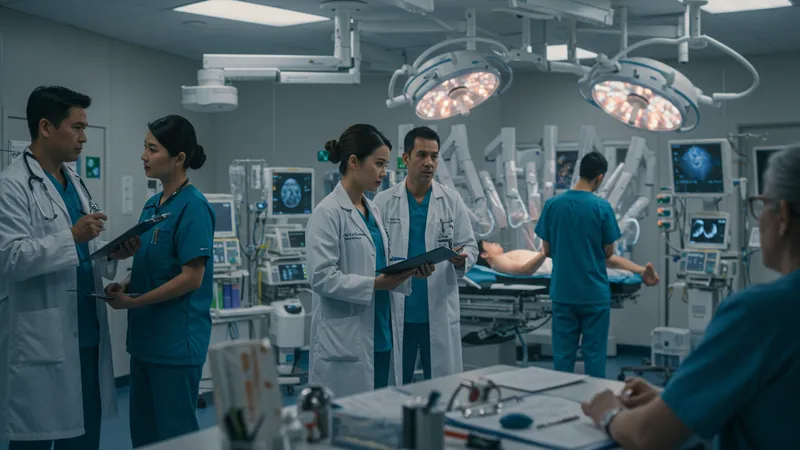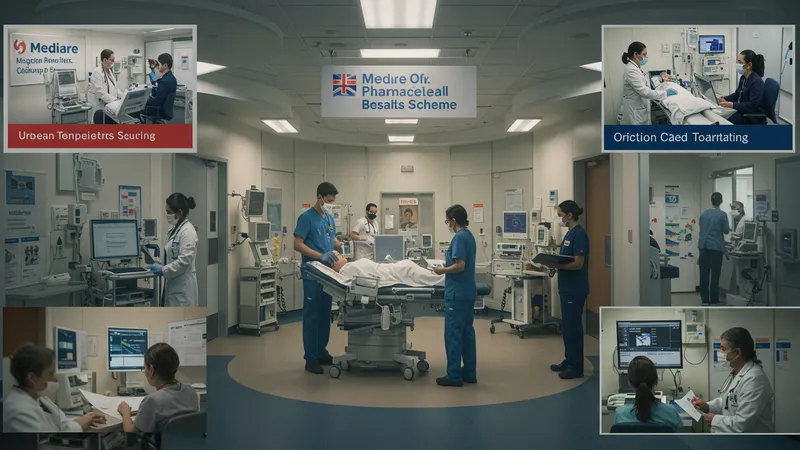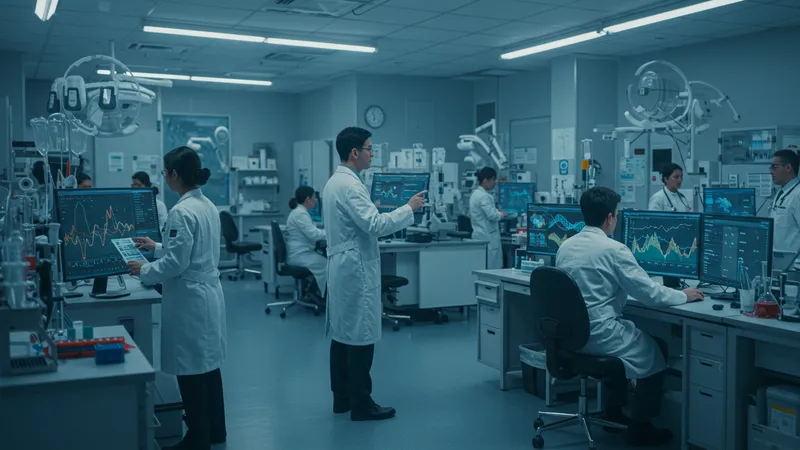

Understanding cancer treatments goes beyond simply knowing the names of different therapies. It involves grasping how various approaches work, why doctors recommend certain types for specific cancers, and what choices are available in modern oncology. These treatments are designed to target cancer cells, limit their growth, and minimise harm to healthy tissue—using strategies tailored to the individual. As a result, understanding cancer treatments means not only recognising established procedures but also appreciating the ongoing advancements that give patients more options than ever before.
Around the world, oncologists rely on a range of cancer treatments that differ in mechanisms and effectiveness. The landscape includes traditional treatments like surgery and chemotherapy, as well as newer innovations such as immunotherapy and targeted therapies. Navigating this landscape can be complex, as each option comes with unique benefits, side effects, and criteria for eligibility. For anyone impacted by a cancer diagnosis—patients, families, and caregivers alike—learning about treatment basics and recent breakthroughs helps lay the groundwork for informed decisions.

Surgery, one of the oldest and most direct forms of cancer treatment, involves removing tumors along with some surrounding tissue. Depending on the type and stage of cancer, surgery may serve as a curative measure or a component of a broader plan. Australian hospitals apply advanced surgical techniques, including minimally invasive approaches like laparoscopy, to improve recovery times and outcomes.
Chemotherapy relies on powerful medications that circulate throughout the body to destroy rapidly dividing cells. In Australia, chemotherapy drugs are tailored for each patient, sometimes used alone or in combination. Access to these medicines is supported by programs like the Pharmaceutical Benefits Scheme, which helps manage costs and availability for patients nationwide.
Radiation therapy uses targeted, high-energy rays to eliminate cancer cells and shrink tumors. Australian facilities have invested in state-of-the-art linear accelerators and advanced planning software, helping oncologists deliver precise doses with minimal impact on surrounding tissues. This approach can be used on its own or alongside surgery and chemotherapy.
Immunotherapy and targeted therapy represent the latest advancements in cancer care. Immunotherapy harnesses the patient’s immune system to detect and attack cancer, while targeted therapies use drugs to interrupt specific molecules that drive cancer cell growth. Many of these treatments are now available in Australia as part of clinical trials or standard care, offering new hope for those with advanced or previously treatment-resistant cancers.
The methods listed above highlight the diversity and complexity of cancer treatment options now accessible in Australia. The deeper details reveal even more valuable insights ahead—especially as we break down how these treatments differ and why certain therapies are chosen for each patient.
In Australia, the primary cancer treatments—surgery, chemotherapy, radiation therapy, immunotherapy, and targeted therapy—are cornerstone options found nationwide. These treatments are administered in public and private hospitals, with support from multidisciplinary cancer care teams. While some patients may receive a single type of treatment, many benefit from a combined approach, such as surgery followed by chemotherapy or radiation. The decision-making process involves numerous factors, including cancer type, stage, patient health, and available clinical evidence.

Surgery remains the standard for many localized cancers, particularly when tumors are confined and accessible. Australian surgeons are trained in specialized procedures such as robotic-assisted surgery, minimizing recovery time and hospital stays. Despite the increasing sophistication of non-surgical therapies, surgery is still considered essential when cancer can be physically removed.
Chemotherapy and radiation are often used when cancer has spread beyond its original location. In Australian oncology centres, chemotherapy regimens are specifically designed based on the latest research and clinical guidelines. Radiation therapy is commonly delivered using imaging technology to target only the affected regions, resulting in greater accuracy and lower side effects for patients.
Newer treatments, such as immunotherapy and targeted therapies, are transforming cancer care in Australia, especially for advanced or metastatic cancers. These options can sometimes be accessed through government-funded clinical trials or compassionate access programs. As research progresses, more Australian patients are becoming eligible for therapies that once seemed out of reach, further diversifying the treatment landscape.
The process of planning cancer treatment in Australia is highly individualised. Multidisciplinary teams, often centered at hospitals or cancer centres, comprise specialists such as surgical oncologists, medical oncologists, radiation oncologists, and nurses who collaborate to design optimal care plans. Tailoring treatment to the unique characteristics of each patient ensures the best possible outcome, taking into account not only clinical factors but also quality of life considerations.

For each treatment modality, Australian clinicians use diagnostic data like biopsy results, imaging scans, and genetic information to build a tailored strategy. For example, targeted therapies rely heavily on the molecular profile of the tumor—identifying gene mutations that can be matched with specific medications. Patients benefit from genomic testing, which has become more widely available across major cancer centres in Australia.
Careful assessment also extends to managing potential side effects. Oncology nurses and allied health professionals provide support to minimise disruptions to daily life, offering advice on nutrition, symptom management, and emotional wellbeing. Telemedicine services, now widely used throughout Australia, allow for ongoing follow-up and adjustments to treatment without patients needing to travel long distances for every consultation.
Personalisation isn’t limited to treatment but also encompasses the timing and combination of therapies. For instance, a patient might begin with chemotherapy to shrink a tumor before surgery or add immunotherapy if the cancer does not respond fully to initial measures. This flexibility helps Australian oncologists respond dynamically to changes in a patient’s condition, with the aim of achieving the longest lasting benefit.
Accessing cancer treatment in Australia is facilitated by an integrated public health system, supported by Medicare and additional programs like the Pharmaceutical Benefits Scheme. Most Australians receive their cancer therapies at no direct cost in public hospitals, although some newer targeted and immunotherapy drugs may be available only through private providers or clinical trials. Out-of-pocket expenses can still arise, depending on private insurance coverage and the type of treatment selected.

In recent years, government agencies have made concerted efforts to improve equity in cancer care. For patients living in regional or remote parts of Australia, travel subsidies and outreach programs are designed to ensure access to state-of-the-art therapies. Telehealth consultations further bridge the gap, helping patients maintain contact with specialist teams without lengthy travel.
Support services offered by organisations like Cancer Council Australia and local hospital support groups provide information, transportation, emotional counselling, and financial guidance. These resources help patients and their families navigate the treatment journey, addressing challenges from appointment scheduling to managing time off work.
The Australian Institute of Health and Welfare regularly publishes statistics on treatment access and outcomes, tracking trends over time. Continued investment in these supports has led to improved survival rates and a higher proportion of Australians accessing multidisciplinary cancer care, reflecting the country’s commitment to comprehensive cancer treatment strategies.
Australia continues to be at the forefront of cancer treatment innovation, participating in international clinical trials and investing in research infrastructure. The emergence of precision medicine—a field where therapies are customised based on detailed genetic data—signals exciting new approaches on the horizon. Australian researchers are contributing to global drug development, making it possible for patients to access groundbreaking therapies sooner.

Improvements in artificial intelligence and data analytics are streamlining how cancer is diagnosed, monitored, and treated. Hospitals and cancer centres are adopting these technologies to better predict treatment responses and target interventions more accurately. In some cases, AI tools are being used to identify suitable clinical trial candidates, ensuring no patient misses a potential therapeutic advance.
Patient engagement and education have also evolved, with online platforms, decision aids, and educational resources empowering Australians to participate more fully in their care. Shared decision-making between patients and clinicians fosters greater understanding, leading to treatment choices that align with individual values and expectations.
As the pace of cancer research accelerates worldwide, Australian oncology is expected to gain even greater capabilities. Patients, families, and clinicians can anticipate ongoing improvements in treatment effectiveness, quality of life, and access—maintaining hope for better outcomes and continually advancing the horizon of what’s possible in cancer care.